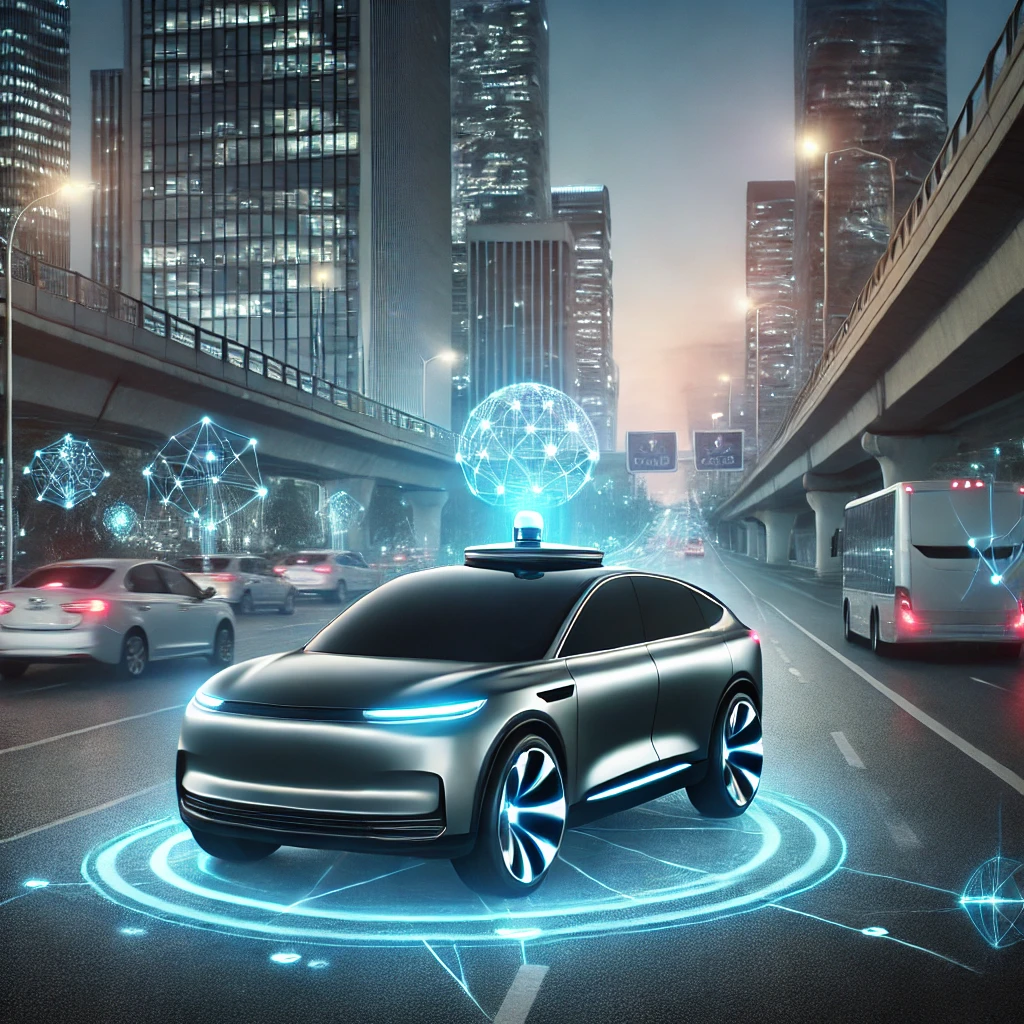
AI in Self-Driving Cars: Cutting-Edge Technology Explained
The idea of self-driving cars was once the stuff of science fiction. But today, with the advent of artificial intelligence (AI), autonomous vehicles are becoming a transformative reality. AI in self-driving cars represents the cutting edge of transportation technology, enabling vehicles to navigate roads, make split-second decisions, and deliver safer, smarter, and more efficient mobility.
This article will break down the technologies behind self-driving cars, explain how AI powers them, and explore the challenges and opportunities ahead for autonomous transportation.
What Are Self-Driving Cars?
Self-driving cars, or autonomous vehicles (AVs), are equipped with advanced technologies that allow them to operate without human input. These vehicles rely on AI, sensors, and high-speed data processing to perceive their environment, make decisions, and navigate safely.
Levels of Autonomy
The Society of Automotive Engineers (SAE) categorizes self-driving cars into six levels of autonomy:
- Level 0: No Automation—Fully human-driven.
- Level 1: Driver Assistance—Features like adaptive cruise control.
- Level 2: Partial Automation—Advanced driver assistance systems (ADAS), such as lane-keeping and self-parking.
- Level 3: Conditional Automation—Vehicles can make driving decisions but still require human oversight.
- Level 4: High Automation—Fully autonomous in specific conditions or areas.
- Level 5: Full Automation—No human intervention needed under any circumstances.
While Level 2 vehicles are already on the road, Level 4 and 5 vehicles are still under development, with AI as the cornerstone of their evolution.
How AI Powers Self-Driving Cars
AI serves as the “brain” of self-driving cars, enabling them to:
- Sense the Environment: AI processes data from multiple sensors to understand the vehicle’s surroundings.
- Make Decisions: Algorithms decide the best course of action, such as when to brake, accelerate, or change lanes.
- Learn and Adapt: Machine learning allows the vehicle to improve its driving skills over time by analyzing patterns and outcomes.
AI essentially acts as a human driver would—only faster, smarter, and more precise.
Core AI Technologies Behind Self-Driving Cars
Several advanced AI technologies are integral to the functioning of autonomous vehicles:
- Machine Learning (ML): Algorithms analyze large datasets to recognize patterns and improve performance over time.
- Deep Learning (DL): A subset of ML, deep learning uses neural networks to process complex data like object recognition and behavior prediction.
- Neural Networks: These AI models mimic the human brain, enabling self-driving cars to process vast amounts of data and make decisions in real time.
The Role of Sensors in Autonomous Driving
Self-driving cars rely on a suite of sensors to gather data about their environment:
- LiDAR: Creates 3D maps by measuring distances with laser pulses, essential for detecting obstacles and mapping surroundings.
- Radar: Tracks the speed and distance of nearby objects, even in poor weather.
- Cameras: Provide high-resolution visual data for tasks like recognizing pedestrians and reading traffic signs.
- Ultrasonic Sensors: Detect objects at close range for low-speed maneuvers, such as parking.
AI integrates data from these sensors to create a cohesive picture of the environment and make driving decisions.
Computer Vision in Self-Driving Cars
Computer vision, a subset of AI, allows self-driving cars to interpret and analyze visual data. Key functions include:
- Object Detection: Identifying vehicles, pedestrians, cyclists, and other road users.
- Lane Tracking: Recognizing and maintaining lane boundaries.
- Traffic Sign Recognition: Reading and responding to stop signs, speed limits, and other road markers.
By processing this visual data in milliseconds, AI ensures safe and accurate navigation.
AI-Powered Safety Features in Self-Driving Cars
Safety is a primary focus of self-driving technology, and AI powers several critical features:
- Collision Avoidance: Detects potential crashes and takes preventive action.
- Emergency Braking: Automatically applies brakes to avoid obstacles.
- Pedestrian Detection: Identifies and predicts pedestrian movement to ensure safety.
According to the National Highway Traffic Safety Administration (NHTSA), 94% of accidents are caused by human error—a statistic self-driving cars aim to dramatically reduce.
Challenges in AI for Self-Driving Cars
Despite its potential, AI in autonomous vehicles faces several hurdles:
- Ethical Dilemmas: How should AI prioritize safety in scenarios where collisions are unavoidable?
- Data Privacy: Ensuring the security of data collected by self-driving cars.
- Technological Barriers: Perfecting AI systems to handle complex and unpredictable situations.
- Regulation: Developing global standards for autonomous vehicle operation and liability.
Addressing these challenges is essential for the widespread adoption of self-driving cars.
The Future of AI in Self-Driving Cars
The future of autonomous vehicles is brimming with possibilities, including:
- Flying Cars: AI is being developed for vertical takeoff and landing (VTOL) vehicles.
- Smart Cities: Integration of self-driving cars with IoT infrastructure for seamless urban mobility.
- Autonomous Freight: AI-powered trucks are revolutionizing logistics by reducing costs and improving efficiency.
These advancements promise to reshape transportation as we know it.
FAQs
What is the role of AI in self-driving cars?
AI processes data from sensors, makes driving decisions, and learns from experiences to enable autonomous navigation.
How do self-driving cars recognize objects?
AI uses computer vision and deep learning to identify and track objects like vehicles, pedestrians, and traffic signs.
What are the main challenges for AI in autonomous vehicles?
Challenges include ethical dilemmas, data privacy concerns, technological limitations, and regulatory hurdles.
When will fully autonomous cars become mainstream?
Experts predict that Level 4 and Level 5 self-driving cars will become more common within the next decade, though regulatory approval may take time.
Which companies are leading in AI for self-driving cars?
Tesla, Waymo, Cruise, and Baidu Apollo are among the global leaders in autonomous vehicle technology.
AI in self-driving cars is not just a technological breakthrough—it’s a paradigm shift in how we think about transportation. By enabling vehicles to see, think, and act independently, AI is making roads safer, reducing traffic congestion, and opening up mobility to all. As advancements continue, the dream of fully autonomous cars is closer than ever, promising a future of smarter, greener, and more efficient transportation.